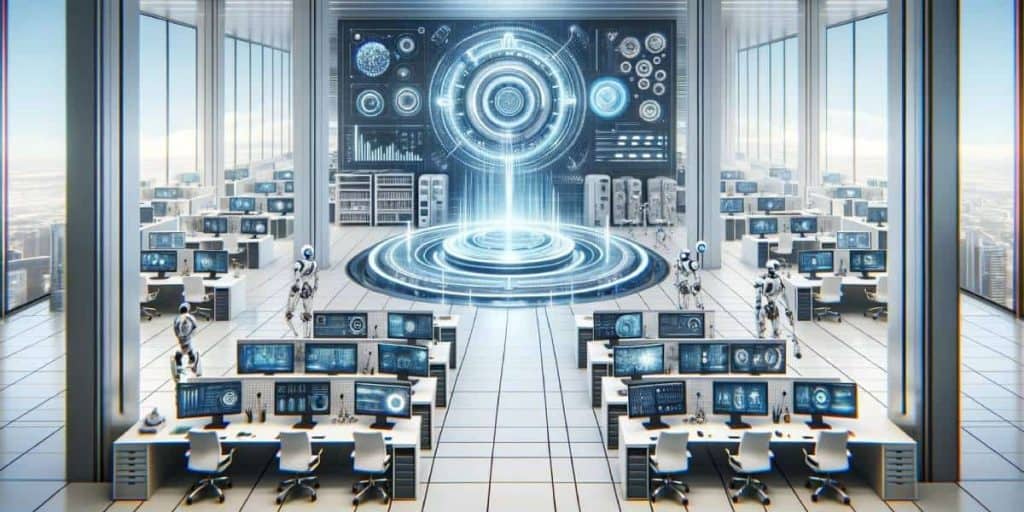🚀 AI’s progress has outpaced AI Researcher estimates, signalling a transformative era ahead!
📈 It’s crucial for professionals, entrepreneurs, and investors alike to reevaluate their positions and strategies in light of these advancements. 🧐
⏩ AI Leap
🐎➡️🚗 Think about the dramatic change from horse-drawn carriages to automobiles! Now, with AI, automation, and robotics, we’re on the brink of an even faster and more impactful transformation.
What does this mean for you? It’s time to examine how your role, product/service, or investments might evolve or face obsolescence. 🤔💡 But it’s not just about keeping up; it’s about leveraging AI where it excels to enhance and not just replace human expertise. 👥🤖
Adaptability and strategic innovation are key in our journey towards this new future.
🌟 Let’s embrace the change, upskill, and prepare to collaborate with AI… How?

🤖 Why is AI Adoption Accelerating?
AI adoption is accelerating due to a combination of factors that range from technological advancements to economic pressures and regulatory landscapes:
- Technical Feasibility
💠 Rule-based and repetitive tasks: These tasks are easily automated because they follow predictable patterns that machines can replicate with high accuracy and consistency.💠 Advancements in Machine Learning (ML) and AI: Continuous improvements in AI algorithms and computational power have broadened the scope of tasks that can be automated, including complex decision-making processes.
💠 Integration capabilities: Modern AI systems can seamlessly integrate with existing technologies, enhancing their ability to automate various functions across different sectors.
- Economic Considerations
💠 Cost savings: Automation can significantly reduce labor costs as AI systems can operate continuously without the need for breaks, leading to increased productivity.💠 Efficiency improvements: AI can process and analyze large volumes of data faster than humans, leading to more efficient decision-making and operational processes.
💠 Competitive advantage: Organizations that adopt AI can gain a competitive edge through enhanced capabilities, such as personalized customer experiences and optimized supply chains.
- Regulatory & Ethical Issues
💠 Legal constraints: The extent of automation is sometimes limited by laws and regulations that protect certain job categories or ensure ethical AI usage.💠 Social considerations: There is growing concern about the social impact of automation, including job displacement and the need for workforce re-skilling.
💠 Ethical AI use: Organizations are increasingly focusing on the ethical implications of AI, including privacy concerns, bias prevention, and ensuring that AI systems are transparent and accountable.
The acceleration of AI adoption is driven by the potential to transform businesses and economies, but it is also tempered by the need to address the regulatory, ethical, and social implications of widespread automation.
💡 How about you? Ask AI…
For example, ask ChatGPT, Claude, or a similar AI chat for feedback on when your job may be absorbed by AI, automation, or robotics, and what areas you should be looking to upskill in!
Example Prompt:
“I am a [YOUR ROLE] in the [YOUR INDUSTRY] industry, assume the role of an AI researcher with three decades of experience as a business analyst. Predict when the duties of my current role will begin to be absorbed by AI, automation, or robotics, including an estimated timeline. Evaluate my skill set relevant to this role and identify 10 current or upcoming job opportunities within my industry. These roles should offer similar or better remuneration, require skills pertinent to my experience, and have a lower risk of being automated or replaced by AI and robotics in the next decade. Provide insights into how I can effectively transition to these roles through upskilling.“
…Replace the [YOUR ROLE] and [YOUR INDUSTRY] with your relevant information.
🤖 ChatGPT
https://chat.openai.com/
🤖 Claude
https://claude.ai/
📄 List of AI Platforms
These platforms provide tools and frameworks that facilitate the development, deployment, and management of AI applications, making it easier for individuals and businesses to harness the power of AI. From enhancing data processing productivity to spark creativity in art and design, AI platforms are at the forefront of the digital revolution, pushing the boundaries of what is possible with technology. To explore a comprehensive list of AI platforms across various categories like chatbots, art generation, and more, you can visit the detailed guide on Vitality for Gamers’ website.
🕵🏽♂️Jobs Under Fire
💻Data Entry Clerks: Automatable tasks are on the rise with AI algorithms enhancing speed and accuracy in data processing.
📞Telemarketers & Call Center Agents: Get ready for more AI-powered chatbots and voice assistants handling customer interactions!
📊 Bookkeeping & Accounting Clerks: Say hello to AI simplifying tasks like data reconciliation and payroll processing.
🏭 Manufacturing Assembly Line Workers: Robots and AI systems are becoming staples in manufacturing for tasks needing precision and consistency.
🛒 Retail Cashiers: Automated checkouts and kiosks are becoming the new norm, changing the retail experience.
📝 Administrative Assistants: AI tools are streamlining scheduling, email management, and more.
🔍 Market Research Analysts: AI is reshaping market research with automated data collection and analysis.
📦 Inventory Managers & Stockists: AI-driven systems are revolutionizing inventory management and logistics.
🚚 Transportation & Delivery Services: Autonomous vehicles are gearing up to transform transport and delivery sectors.
🗣️ Basic Customer Support: Chatbots and automated systems are increasingly managing customer support services.
👩🏫 Educational Instructors and Trainers: AI can personalize learning experiences through adaptive learning platforms and automate administrative tasks, reducing the need for manual intervention in educational settings.
👩⚕️ Healthcare Professionals (Radiologists, Pathologists): AI-driven diagnostic tools can analyze medical images and tests faster and more accurately, potentially transforming roles in radiology and pathology.
👨💼 Financial Analysts: With AI’s ability to process vast amounts of financial data and make predictions, the traditional roles of financial analysts could shift towards interpreting AI-generated insights and focusing on strategic decision-making.
👩💻 Software Testers and QA Analysts: AI and automation tools are becoming increasingly capable of performing software testing and quality assurance tasks, which may reduce the demand for manual testing roles.
👮♂️ Security Personnel: AI-driven surveillance systems and autonomous drones can perform routine monitoring tasks, impacting the demand for human security guards and surveillance monitors.
👷♀️ Construction Workers: With the advent of AI in construction technology, tasks like surveying, data analysis, and even physical construction activities can be automated, affecting the labor demand in this sector.
📈 Market Analysts and Strategists: AI’s ability to analyze market trends and consumer behavior might reduce the need for human analysts, shifting the focus to strategy development and decision-making based on AI-generated insights.
👨🍳 Culinary Professionals (Chefs, Cooks): Automation and AI in the culinary world, including robotic chefs and AI-based recipe development, could transform traditional kitchen roles.
🌟 Conclusion
While AI and automation bring challenges, especially for routine jobs, they also open doors to new opportunities requiring creativity and complex problem-solving. Embracing change and upskilling are key to thriving in this new era!



